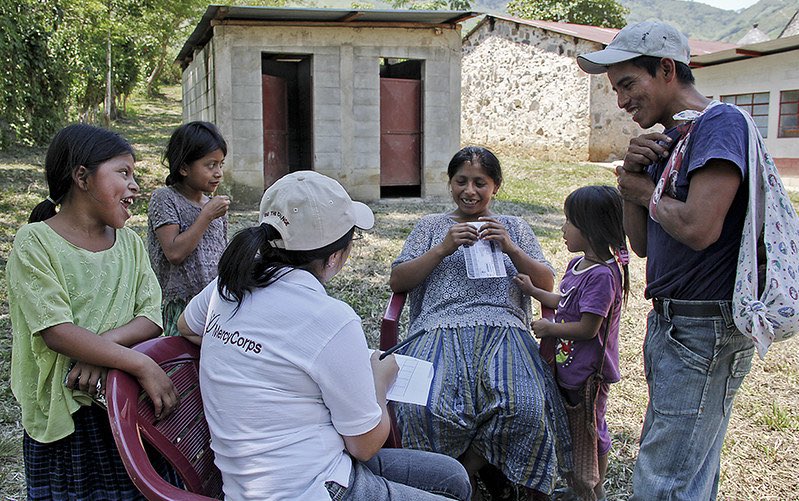This post is the fifth in a series on a research project in Guatemala and Burundi that evaluated how to optimize food assistance programs for maximum impact. Read the first piece here, second here, third here, fourth here, and sixth here.
Food-assisted maternal and child health and nutrition (FA-MCHN) interventions are commonly used in low- and middle-income countries to address problems of hunger, food insecurity, and undernutrition. These programs have been criticized for being too expensive, yet there is little evidence on their cost or cost-effectiveness. Evidence shows that these programs can work, but are the costs reasonable given the size of the impacts?
Strengthening the evidence base
The lack of evidence on the cost‐effectiveness of nutrition interventions—particularly those designed to improve multiple nutrition and nutrition-related outcomes—hampers the ability of donors, implementers, and recipient countries to best allocate limited funds. Previous cost studies of nutrition interventions have mostly examined nutrition‐specific programs focusing on a single intervention (e.g., micronutrient supplementation) and on a single outcome (e.g., iron status). Missing are cost studies of programs with several intervention components aimed at improving a range of nutrition and nutrition‐related outcomes for multiple beneficiaries within the household. Such studies are particularly challenging because a common metric cannot be easily used to express impacts that span outcomes ranging from household food security to maternal breastfeeding knowledge. This makes calculating meaningful cost-effectiveness or cost-benefit ratios difficult (Box 1).
To begin to bridge this evidence gap, we conducted a prospective costing study alongside the evaluation of two large‐scale FA‐MCHN interventions implemented in Guatemala and Burundi. We first estimated the cost per beneficiary for each percentage point reduction in stunting. To overcome the challenge of using a single metric to summarize multiple outcomes, we conducted a cost-consequence analysis to assess the full scope of program impacts.
The programs
The two programs that were studied—PROCOMIDA in Guatemala and Tubaramure in Burundi—aimed to prevent undernutrition during the first 1,000 days (from conception to a child’s second birthday) and comprised three core components: Provision of family and individual food rations; a behavior change communication (BCC) strategy aimed at improving nutrition, health, and hygiene practices; and activities to strengthen the local healthcare system and promote its use. The five-year programs and their evaluations were funded by USAID’s Office of Food for Peace.
PROCOMIDA, implemented by Mercy Corps, served nearly 53,000 mother-child pairs. The program’s standard food assistance package included a family ration of rice, beans, and oil paired with an individual ration of corn-soy blend (CSB, a micronutrient-fortified blended food). For the impact evaluation, we used six study arms (five treatment, one control) to assess which family ration size and which type of individual ration (CSB, a lipid-based nutrient supplement, or a micronutrient powder) generated the largest benefits.
Tubaramure was implemented by a Catholic Relief Services–led consortium and enrolled 36,000 mother-child pairs during its operation. The standard program provided food rations (family and individual rations of CSB and vitamin-fortified oil) from pregnancy until the child’s second birthday. For the impact evaluation, four study arms (three treatment, one control) were used to identify the optimal timing and duration of the individual rations.
Program impacts
Both programs improved a wide range of nutrition and nutrition-related outcomes. PROCOMIDA increased adoption of optimal infant and young child feeding (IYCF) and childcare practices; improved maternal health and nutrition knowledge; and in some treatment arms improved household cleanliness and reduced household hunger. In addition to these positive program effects, however, in one study arm PROCOMIDA increased maternal anemia. The program also increased maternal postpartum weight retention—a concerning finding in a context where many women are overweight or obese. Tubaramure improved household food security and hand-washing practices; reduced the share of households not treating their drinking water; improved maternal knowledge in several health- and nutrition-related domains; lowered child morbidity; had a positive effect on maternal dietary diversity and IYCF practices; reduced the prevalence of child stunting and wasting and the prevalence of anemia in mothers and children; and had a small positive impact on children’s motor and language development.
Assessing cost-effectiveness
In both Guatemala and Burundi, providing the full treatments cost more than delivering the reduced treatments. Reducing the duration of food-assistance (Burundi) lowered the cost of food but did not substantially reduce the cost of other program activities, as food distributions still required similar logistical and managerial inputs, even though fewer beneficiaries were attending any given distribution.
The largest reductions in stunting were found in the full treatment arms—that is, the group receiving the largest rations in Guatemala, and the group receiving rations for the full first 1,000 days in Burundi. Importantly, the treatment arms with the most meaningful reductions in stunting were only marginally more expensive to deliver, and the lowest cost per percentage point reduction in stunting was found in these arms. In addition to the effects on linear growth, both programs improved many other outcomes in children, mothers, and at the household level. Across the eight intervention arms in the two studies, the largest number of significant positive effects were found in the study arms with a significant effect on child linear growth.
A second important lesson comes from comparing the Guatemala program models that varied the amount of food that households received. We found that only the ones providing the full family ration had a measurable effect on linear growth. This finding is important for policymakers, who are often faced with a choice between serving more people with a lighter program or serving a smaller group of beneficiaries with a more intensive program. Our findings suggest that below a minimum investment level per beneficiary, the returns drop to zero for stunting reduction. A program delivered for a shorter duration, with less intensity, fewer inputs, or poorer quality may be less costly, but will not necessarily result in improved nutrition outcomes if all the limiting nutrients and conditions have not been adequately addressed.
Finally, we studied cost savings by simulating the cost of extending the duration of program implementation. Development programs typically receive funding for fixed periods—enough to allow for building a complex program but not for operating at peak capacity for a meaningful length of time. We found that implementing the programs for two additional years (i.e., extending them to 7-year programs) would result in an 11% cost saving per beneficiary for PROCOMIDA and an 18% saving for Tubaramure. Savings stemmed in part from redistribution of start-up costs (which constituted 10%-17% of total costs) over the two extra years, but more from operating at peak beneficiary capacity (when per beneficiary costs were lowest) over a longer period. This finding suggests that international assistance programs could be delivered at a much lower per beneficiary cost if they were implemented for a longer time.
FA-MNCH programs are expensive, but they are well-worth the investment given their potential to improve a wide range of nutrition and nutrition-related outcomes. These programs require a significant investment, however, to ensure that they provide the right inputs, in the right amounts, and for the appropriate duration. Further research should explore the dynamics of program duration and cost per beneficiary to understand how to optimize the duration of program implementation.
Jef Leroy is a Senior Research Fellow with IFPRI’s Poverty, Health, and Nutrition Division (PHND); Jessica Heckert is a PHND Research Fellow; Deanna Olney is a PHND Senior Research Fellow; Susan Richter is a Data Scientist at Michigan State University; Elyse Iruhiriye is Assistant Scientist at Johns Hopkins Bloomberg School of Public Health; Marie Ruel is Director of PHND; and Tracy Brown is an IFPRI Senior Editor. This blog post is based on a project made possible by support from the United States Agency for International Development, the Food and Nutrition Technical Assistance III Project (FANTA) managed by FHI 360, and the CGIAR Research Program on Agriculture for Nutrition and Health.







